3 Your Blood type can help 40% population An interesting fact about A Blood Type is that that you can help 40% of the US Population by donating blood A negative blood type can be given to people with A, A, AB, and AB So, this means that one blood group type is suitable for four different types of blood groups The Rh factor genetic information is also inherited from our parents, but it is inherited independently of the ABO blood type alleles There are 2 different alleles for the Rh factor known as Rh and Rh Someone who is "Rh positive" or "Rh" has at least one Rh allele, but could have two Their genotype could be either Rh/Rh or Rh/RhBlood Type Calculator Simply fill in the required fields of the Blood Type Calculator by selecting the blood type of the child's mother and father After clicking the calculate button, the Blood Group Calculator will display the probability of your child's future blood group in the form of percentages Find out if your baby will be in Blood Group A, B, AB or O with the Blood Type

Can Two Rh Positive Parents Have An Rh Negative Child
Family parent child blood type chart
Family parent child blood type chart- That means each child of these parents has a 1 in 8 chance to have a baby with an O blood type Each of their kids will also have a 3 in 8 chance of having A, a 3 in 8 chance of being O, and a 1 in 8 chance for being AAn A parent and an O parent can definitely have an O child A mother who is blood type O can only pass an O allele to her son or daughter A father who is blood type AB could pass either an A or a B allele to his son or daughter This couple could have children of either blood type A (O from mother and A from father) or blood type B (O from mother and B from father)




Paternity Testing Blood Types And Dna Learn Science At Scitable
This is because Onegative is the universal blood type, meaning any other blood type may receive it (see our blood type compatibility chart here) This can quickly deplete the stores of Onegative that blood centers have on the shelves And while 45% of the population is type O, less than 7% is OnegativeThere are four common values A, B, AB, and O If you know the mother and child's type, then you can use the following chart to narrow the list of possible types for the father Find the child's value in yellow and the mother's value in blueWhile most people in the US would identify nuclear families as being the 'traditional' family type, in different cultures extended families are much more common and have been around for hundreds of years Extended families are families with two or more adults who are related through blood or marriage, usually along with children
Answer (1 of 6) A, A,0 and or 0 See That's because people having one gene for blood group A is enough to be typed blood group A, the other gene can be either A also, or non A non B thus 0 So if both parent had only one A gene, the children would have a 25% chance of being 0( genetically7) Candace has type B blood Her husband Dan has type AB blood Is it possible for Candace and Dan to have a child that has O blood?What does a circle in a pedigree chart represent?
"if both parents have b blood type, can their child have a different blood group?and if the parents have 2 children, can only one child differ?" Answered by Dr Joanna Chan Yes to both If both parents are B, any of their children can be eithOne way to figure out what your blood type could, potentially, be, is to find out what the blood type of each of your parents happens to be Blood type is something that is genetically passed down from parent to child You can use a punnett square to sort this out Another way to find out your blood type is to have a doctor test your blood A parentchild relationship (PCR) is one that nurtures the physical, emotional, and social development of the child It's a unique bond that every child and parent experience, enjoy and nurture The relationship lays the foundation for the child




Blood Types History Genetics And Percentages Around The World Owlcation




Blood Type Chart And Information On Blood Group Types Disabled World
You cannot get a blood type that the parents do not have (ie, a parent with type O blood and a parent with type B blood cannot have a child with type A blood) While these general rules apply most of the time, the body is very complex and thereClick here for a pdf printable of Family Relationship Chart_____ Explain why or why not (use a Punnett square to help) 8) Ralph has type B blood and his wife Rachel has type A blood They are very shocked to hear that their baby has type O blood, and think that a switch




How To Determine Your Baby S Blood Type Using A Punnett Square




Solved The Genetics Of The Abo Blood Group Background Blood Chegg Com
Prior to the discovery of blood groups, blood transfusions were often deadly Physicians attempted the use of milk and animal blood as an alternative to human blood, but met with limited success the discovery of blood types allowed modern transfusions to safely take place Blood typing, blood groups around the world, and the genetics of blood types are discussed in this article The eight common blood types A, A, B, B, O, O, AB, and AB In the United States, O is the most common blood type, found in about 37% of the population, followed by A in around 36% ofA direct descendent can trace their lineage by child relationships all the way back to a specific ancestor When you share an ancestor, you are related by blood to another person sc inlinead Use Our Family Tree Chart to Find Your Kin!




The Hh Blood Group Blood Groups And Red Cell Antigens Ncbi Bookshelf




11 Ab Blood Type Genetics Youtube
List three people from the chart (other than George) who are most likely carriers of Falconi anemia Ff Ff ff F 4 Two normallypigmented parents have 3 children The first child (a girl) and their second child (a boy) have decides to trace the inheritance of blood types through her extended family, all the way back to her greatThe A and B are dominant, and O is recessive So allele A combined with allele O is type A Similarly, BO is type B, AA is type A, BB is type B, OO is type O, and AB is type AB If both parents have type A blood, then the alleles could be AA or AO, thus the allele A frequency is 75%, allele O frequency is 25% for both parents Out of those 4, three combinations give blood type A, I've shaded those in lighter blue below One combination, OO, gives blood type O So there's a 1 out of 4, or 25% chance, that the child will have blood type O and 3 out of 4, or 75% chance that the child will have blood type A




How To Find Out Your Blood Type If You Don T Know What It Is Cnn




Understanding Genetics
There are basically four primary common Blood types The most common by far is Blood type O, followed by type A, type B, and the least common is Blood type AB Blood type is determined by the "alleles" that we inherit from our parents Alleles are different possible types of a particular gene, in this case the gene(s) controlling our Blood type There are three common Blood type A blood type chart provides information on the expected blood types of children from that of their parents Perhaps the greatest difference between these two paternity tests is that the blood type chart cannot be used as conclusive proof of fatherhood Each parent passes one allele (gene) for blood type to their child A parent who has O blood can only pass an O allele A and B alleles are "codominant" This means that a child




Blood Type Calculator
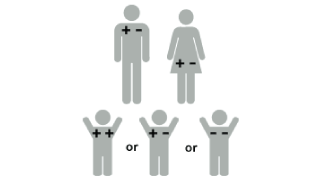



Blood Types In Pregnancy Children S Hospital Of Philadelphia
The child's blood type is decided by both parents' blood type Parents all pass along one of their 2 alleles to make up their child's blood type There are 4 maternal blood types and 4 paternal blood types, so there are 16 total combinations to consider when predicting the child's blood typeBoth parents have Type B bloodA female The inheritance pattern for the ABO blood type in humans is best described as codominant Which of the following are possible phenotypes of the parents of a child with Type O blood?




Pdf Blood Group And Genotype Compatibility




11 Ab Blood Type Genetics Youtube
The child will have a 50% chance of A blood type and 50% B type After that calculate the chances of genotypes Chances of your Child's genotype is AA is 75% * 50% = 375% Chances of your Child's genotype is AB is 75% * 50% = 375% Chances of your ChildType A This blood type has a marker known as A Type B This blood type has a marker known as B Type AB This blood type has both A and B markers Type O This blood type has neither A or B markers Blood is further classified as being either "Rh positive" (meaning it has Rh factor) or "Rh negative" (without Rh factor)Put the test strip into the blood glucose meter Stick the finger on its side near the top of the finger ( Picture 1 ) Squeeze the finger so a drop of blood comes up on the skin Touch the blood sample to the test strip Read the blood glucose number on
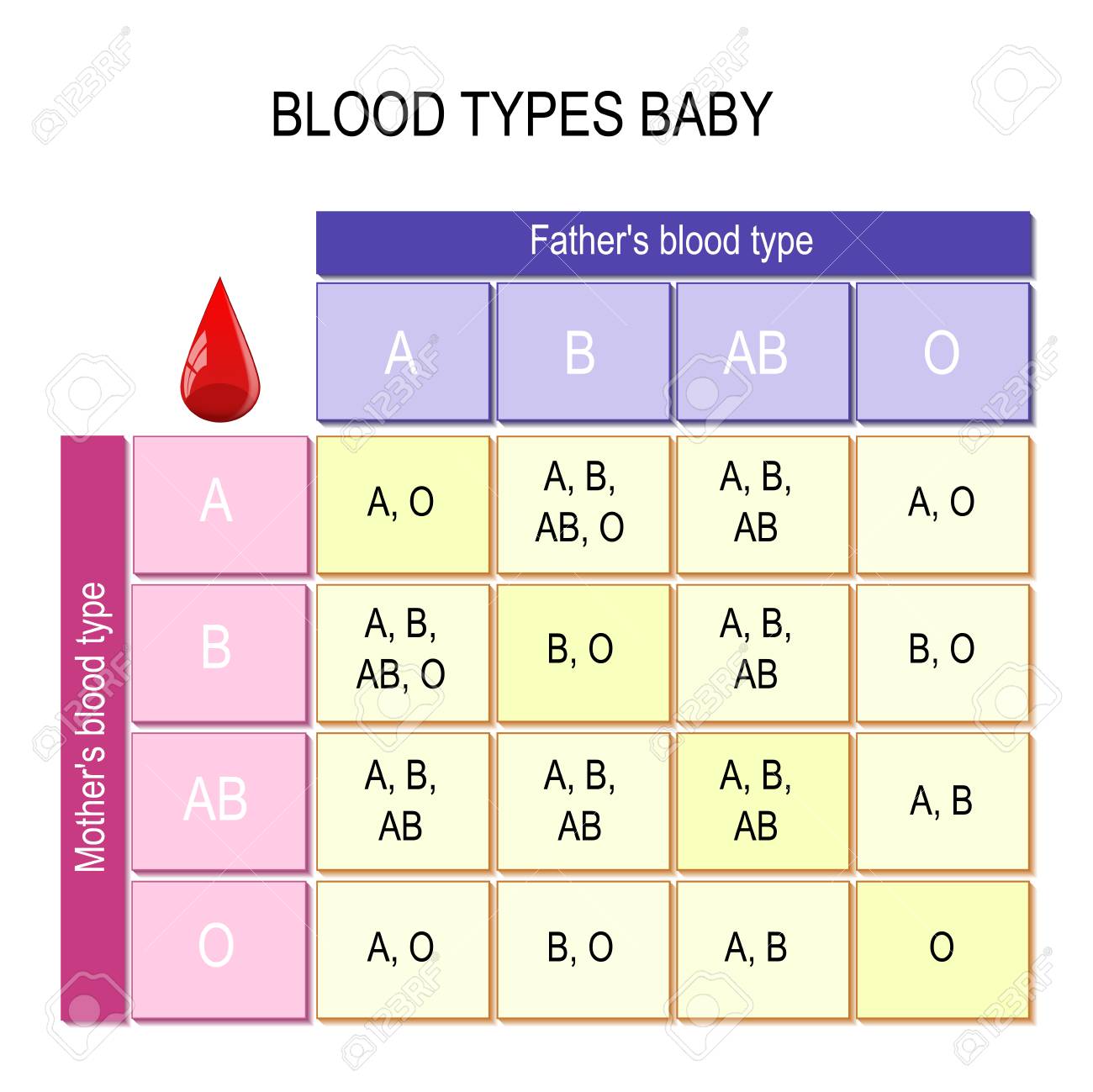



Blood Types Baby Chart How Mother And Father Blood Types Impact Blood Type Of Their Children Vector Diagram Showing The Potential Outcomes Illustration For Educational Science And Medical Use Royalty Free Cliparts




Solved The Genetics Of The Abo Blood Group Background Blood Chegg Com
Here are the blood types associated with each of the combinations of alleles As you can see, even though there are 6 different allele combinations, there are only 4 different blood types Now we have everything we need in order to explain how two parents without an A blood type might have a child with the A blood typeIo is recessive and produces neither antigen and thus an individual will have blood group O if two of these alleles are present The genotypic makeup can have 6 possibilities resulting in the following phenotypes Ia Ib AB, Ia Ia A, Ia Io A, Ib Ib B, Ib Io B, and Io Io – O Blood group of parents Blood group of childInDepth Blood Charts The blood type donation chart is an easytouse reference for donors and recipients to determine their ABO blood type compatibility The baby blood type chart is a bit more detailed and allencompassing about blood medicine If you are curious and interested to know more the indepth science of your blood, that chart is most pertinent to that need of




Blood Groups Chart There Are Four Basic Blood Types Made Up From Combinations Of The Type



A Couple Has Four Children And Each Of Them Has A Different Blood Type I E Type A Type B Type Ab And Type O What Are The Blood Types And Genotypes Of
In humans, blood type is a result of multiple alleles IA, IB, and iO A few simple rules of blood type genetics are that • AI Ois dominant over i, • BI is dominant over iO, and • BIAI are codominant Two parents who are heterozygous for type A blood and have sickle cell trait have children Answer the following questions aABO Blood group calculator shows what could be the blood group or blood type of a child, given the blood groups of biological parents The discovery of A, B, O and combination bloodYour blood type is determined by the blood types of your parents The following chart illustrates the possibilities for children who have parents with certain blood type combinations FATHER MoTHER o B A AB o o 4 o A 4 4 o B 4 4 A A 4 4 A B 4 4 4 4 B B 4 4 AB o 4 4 AB A 4 4 4 AB B 4 4 4 AB AB 4 4 4 Who can receive my blood?
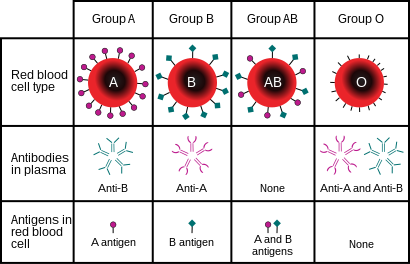



Abo Blood Group System Wikipedia




Blood Type Personality What S Your Blood Group The Answer Might Reveal Some Interesting Things About You
Two parents with A blood type can produce a child with either A or O blood types Two parents with B blood type can produce a child with either B or O blood type One parent with A and another with B can produce a child with A, B, AB or O blood types If one parent has A and another has AB, they can either produce a child with A, B or AB blood types If one parent has A and another has O, they can either produce a child with A or O blood types Rh Positive (Rh) and Negative (Rh) Blood Types Blood Type Calculator Our interactive blood group calculator determines a baby's probable blood types for the ABO system based on the parents' blood type and vice versa People have molecules called antigens on the surface of their red blood cells The two most important ones are ABO system antigens and the Rh systemThe first two are codominant alleles while the last if often called silent Each biological parent donates one of their two ABO alleles to their child A mother who is blood type AB could pass either an A or a B allele to her offspring A father who is blood type




How To Determine Your Baby S Blood Type Using A Punnett Square




About Blood New Zealand Blood Service
Whether your blood group is type A, B, AB or O is based on the blood types of your mother and father View all child parent pairings * Note If you have questions about paternity testing or about blood group inheritance, your primary care physician should be able to provide you with an appropriate referralThis online calculator can help to predict child's looks and traits like eye color, hair color or blood type using twolevel inheritance (parents and grandparents) together with trait distribution statistics Simply select known phenotypes (like color of eyes or hair) of child's father and mother and their grandparents and see the predictionAnswer (1 of 6) Two parents with B blood type can produce a child with either B or O blood type One parent with A and another with B can produce a child with A, B, AB or O blood types If one parent has A and another has AB, they can either produce a child with A, B or AB blood types BLOOD



How Do You Draw A Punnett Showing All The Possible Blood Types For The Offspring Produced By A Type O Mother And An A Type Ab Father Socratic
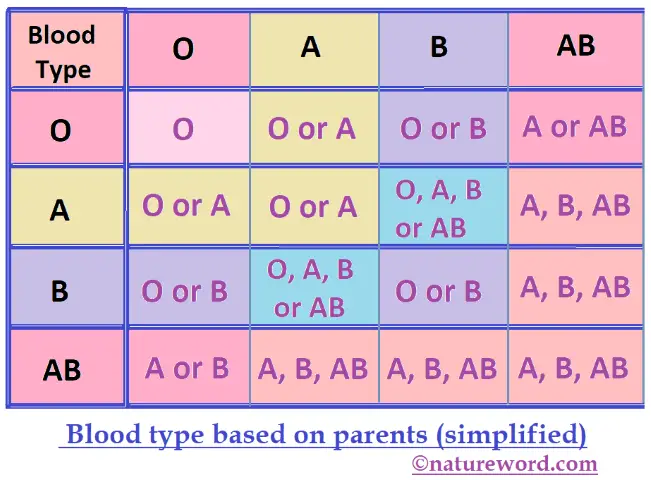



Blood Type Based On Parents Natureword
Everyone has an ABO blood type (A, B, AB, or O) and an Rh factor (positive or negative) Just like eye or hair color, our blood type is inherited from our parents Each biological parent donates one of two ABO genes to their child The A and B genes are dominant and the O gene is recessive1 Blood Type 0(I) 2 Blood Type A (II) 3 Blood Type B(III) 4 Blood Type AB(IV) The First 0(I) Compatible Incompatible Incompatible Incompatible The Second A (II) Compatible Compatible Incompatible Incompatible The Third B(III) Compatible Incompatible Compatible Incompatible The Fourth AB(IV) Compatible Compatible Compatible Compatible The blood type is determined genetically each person inherits it from their parents As it is controlled by a single gene, each person has two alleles describing their blood group Blood type A either AA or A0 Blood type B either BB or B0 Blood type AB alleles AB Blood type 0 alleles 00
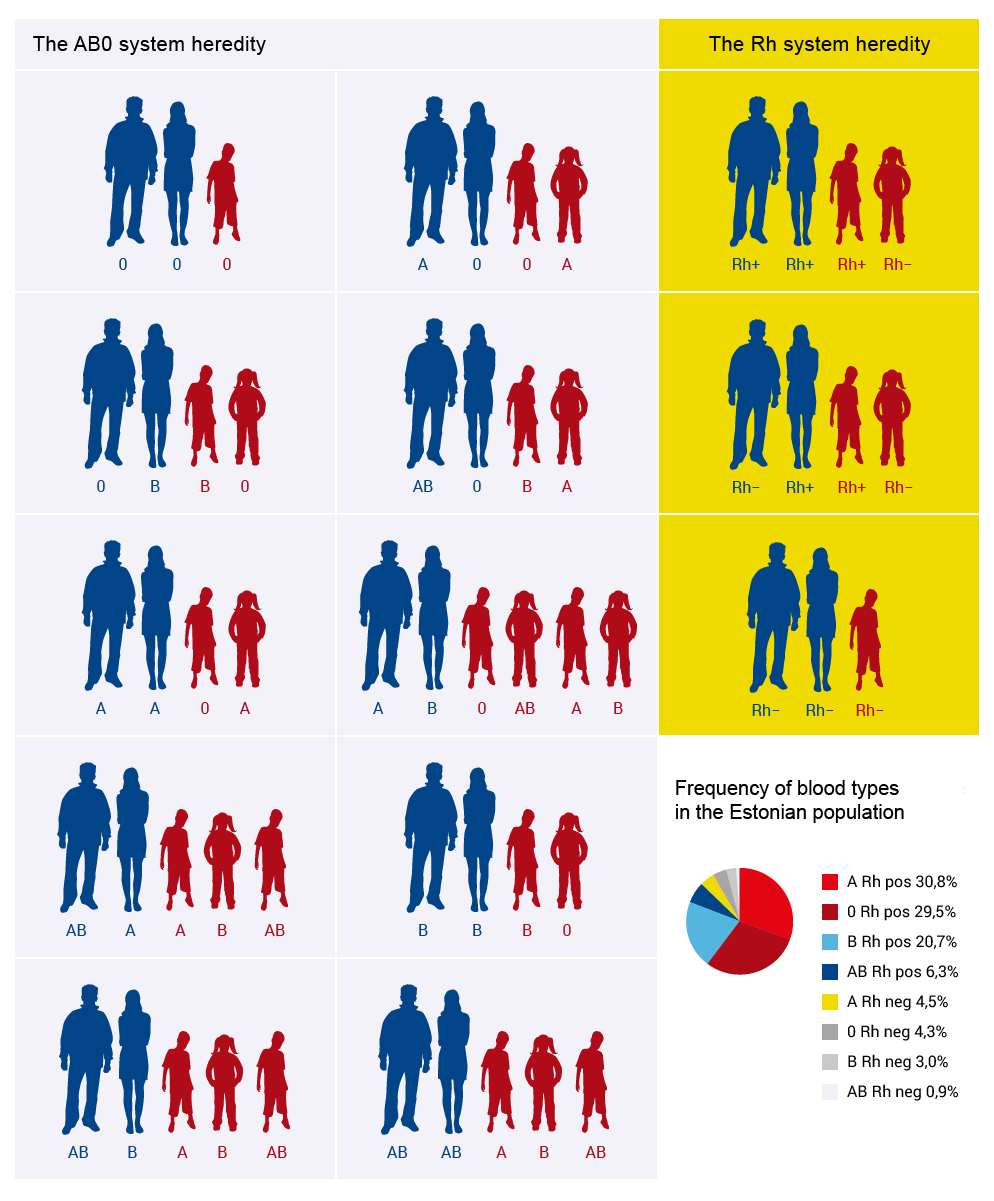



About Blood Types Blood Centre




Understanding Genetics
The reason a baby's blood type isn't always the same as his mother is that blood type is based on genes from each parent So, for example, a mother who is type O and a father who is type A could have a child who is type A The reason the baby wouldn't have type O blood, like his mom, is because the gene for O is recessiveBlood Typing There are 4 different blood types The most common blood type in the population is type O The next most common is blood type A, then B, and the rarest is blood type AB The blood type of the donor must be compatible with the recipient The rules for blood type in transplantation are the same as they are for blood transfusion Some3 rows Two A blood group parents can give their child either A or O blood group Two B blood




Child Blood Type Chart How Mother Stock Vector Royalty Free
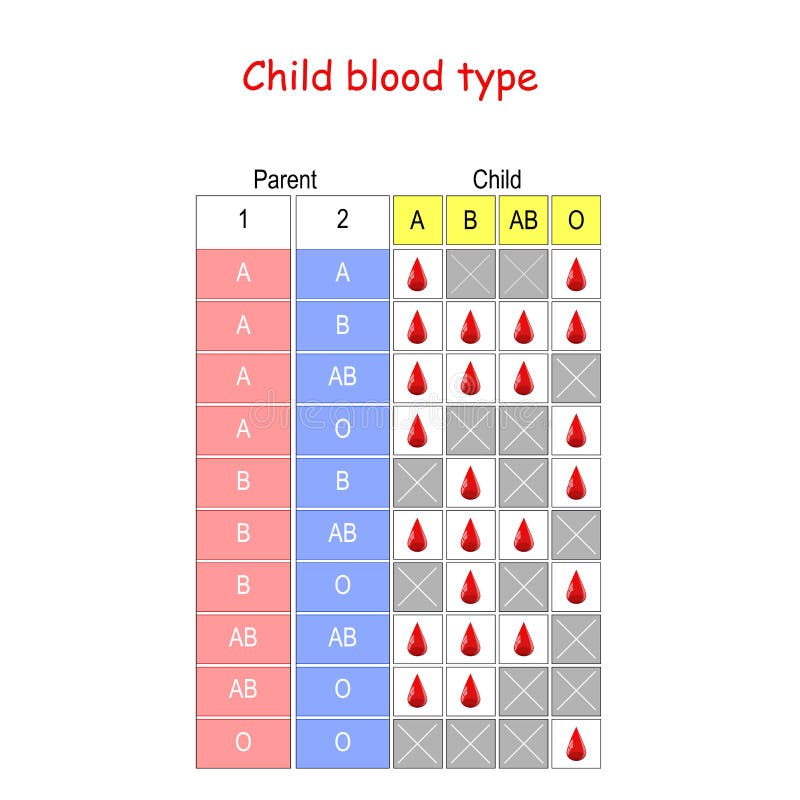



Child Blood Type Diagram Stock Vector Illustration Of Emergency




How To Find Out Your Blood Type Easily Blood Type Chart Facts




Understanding Genetics




Understanding Genetics
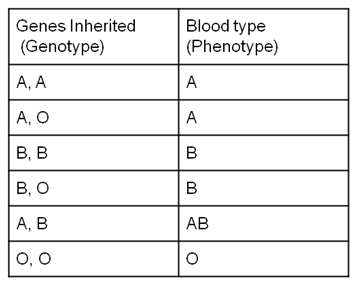



Blood Type Genetics Study Com




Understanding Genetics




Genetically Determined Abo Blood Group And Its Associations With Health And Disease Arteriosclerosis Thrombosis And Vascular Biology




Paternity Testing Blood Types And Dna Learn Science At Scitable




Blood Type Calculator Babymed Com




Blood Types History Genetics And Percentages Around The World Owlcation




The Role Of Blood Type In Determining Paternity




Blood Types History Genetics And Percentages Around The World Owlcation




Pdf Blood Group And Genotype Compatibility




Understanding Genetics
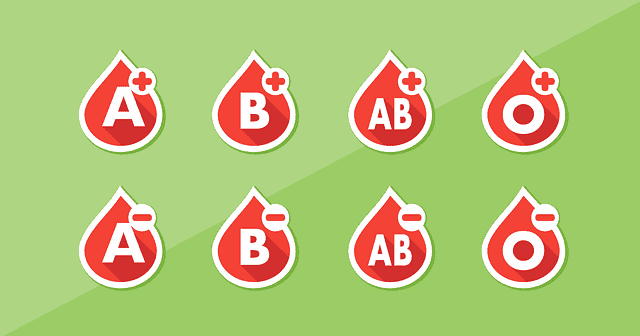



Child Gender Calculator By Parent Blood Type My Due Date Calculator




Can Two Rh Positive Parents Have An Rh Negative Child




Understanding Genetics




Blood Type Compatibility Genetics



What Are The Most Common Blood Types Of A Child From Any Two Parents Coolguides
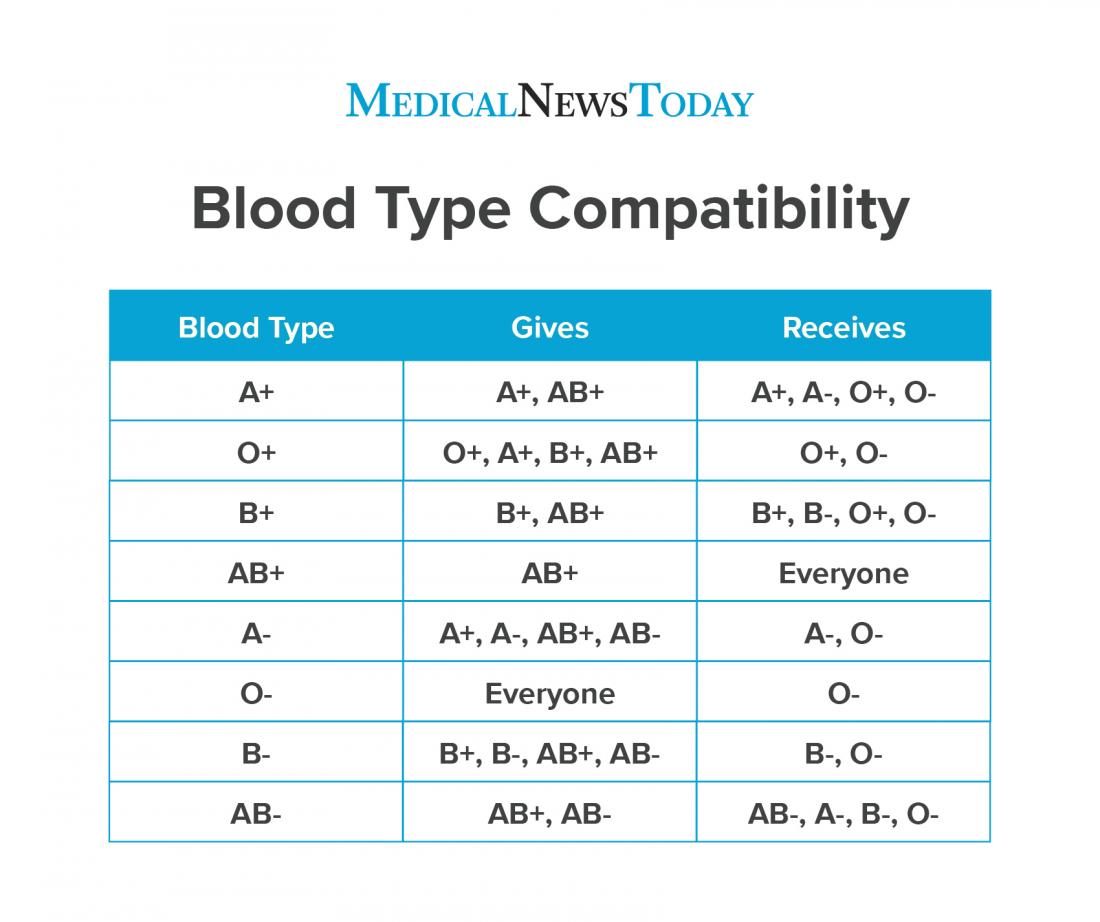



Rarest Blood Type Chart And Compatibility




How To Determine Your Baby S Blood Type Using A Punnett Square




Blood Type Compatibility Predictor Fairfax Cryobank Sperm Bank




Blood Types And Punnett Squares Youtube




Solved The Genetics Of The Abo Blood Group Background Blood Chegg Com




Blood Type Chart Child Father Mother Paternity Determination By Blood Type Parents Child
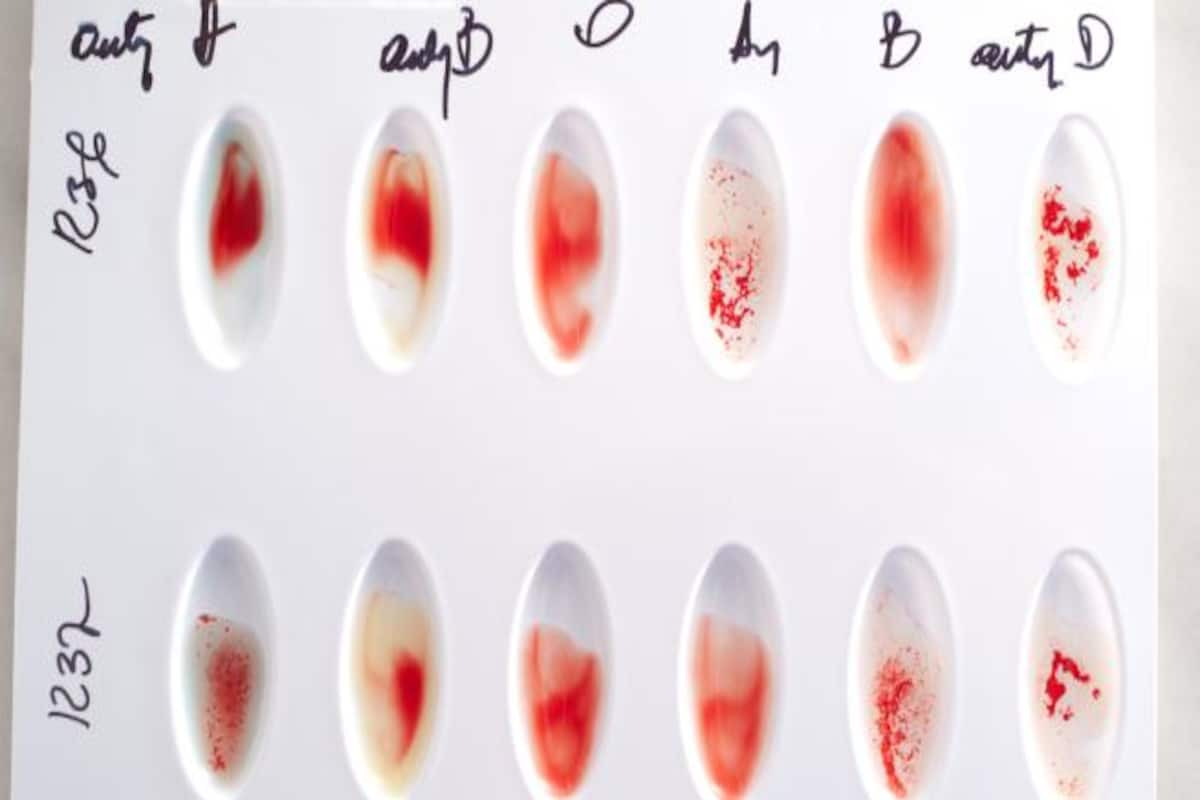



How To Read Your Medical Test Report Blood Typing And Blood Cross Matching Thehealthsite Com




Blood Type Predictor Fairfax Cryobank




Understanding Genetics



Blood Type
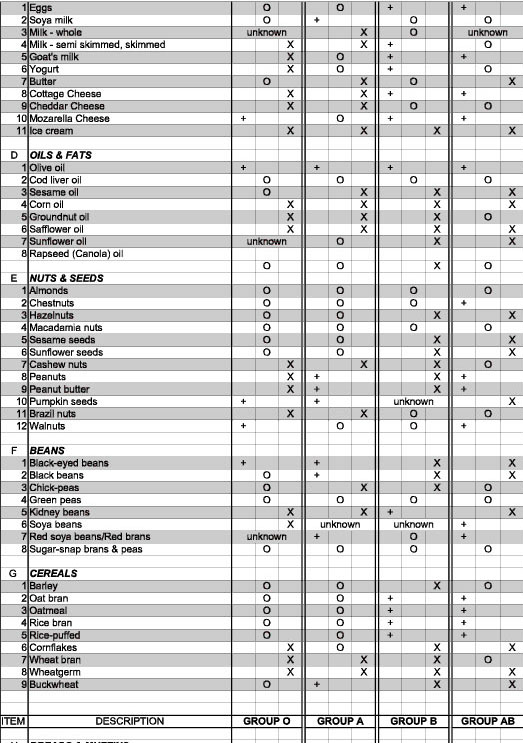



What To Eat According To Your Blood Type Scoop Empire
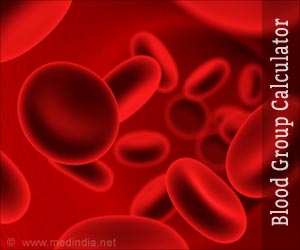



Blood Group Calculator




How To Find Out Your Blood Type Easily Blood Type Chart Facts
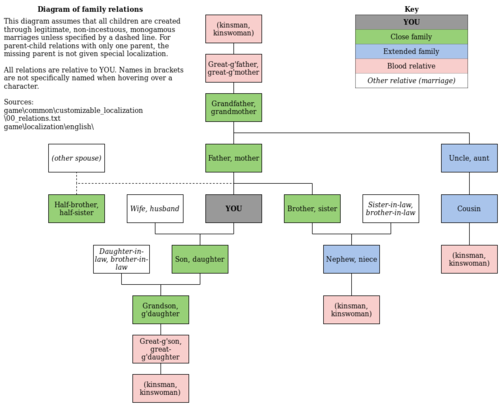



Family Relation Ck3 Wiki



Should Brothers Or Sisters From The Same Parents Have Same Blood Group Quora
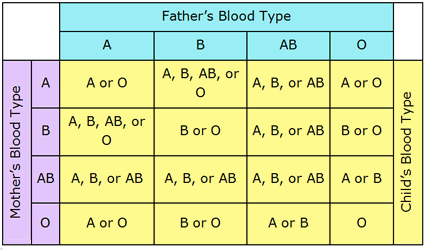



Paternity Checking With Blood Types Paternitytesting Com




The Hh Blood Group Blood Groups And Red Cell Antigens Ncbi Bookshelf




Child Blood Type Chart How Mother Stock Vector Royalty Free




Blood Type Distribution By Ethnicity U S 21 Statista



Paternity Tests How Do They Work And How Accurate Are They




Blood Types Chart 7 Free Pdf Download Documents Free Premium Templates



3




Your Blood Type May Determine Whether You Get Covid 19 Or Not



3



Which Parent Determines The Blood Type Of The Child Mobilestec Com




Understanding Genetics




Child Blood Type Calculator Predict Your Baby Blood Group




Rhnull The Rarest Blood Type On Earth Has Been Called The Golden Blood Latest Science News And Articles Discovery




How To Find Blood Group Of The Parents If Blood Groups Of The Children Are Known Youtube




Blood Type Compatibility Genetics




Blood Types Chart 7 Free Pdf Download Documents Free Premium Templates




Blood Group Images Stock Photos Vectors Shutterstock
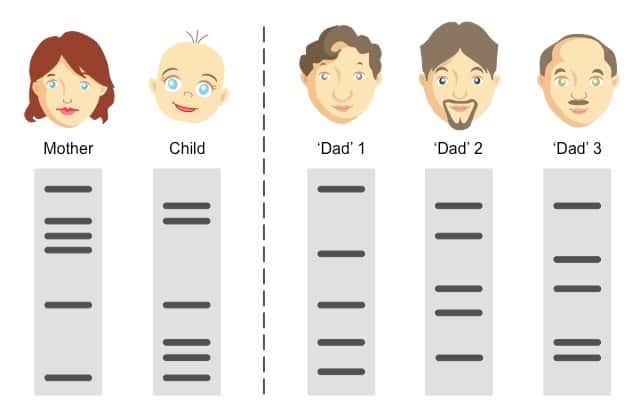



Paternity Tests How Do They Work And How Accurate Are They




Parent Child Blood Type Genetics Chart Poster By Evasdreams Redbubble




How To Determine Your Baby S Blood Type Using A Punnett Square




Pin On Rayban Outlet Online




Blood Types Chart 7 Free Pdf Download Documents Free Premium Templates



Should Brothers Or Sisters From The Same Parents Have Same Blood Group Quora




Solved The Genetics Of The Abo Blood Group Background Blood Chegg Com




Parents Blood Types Chart
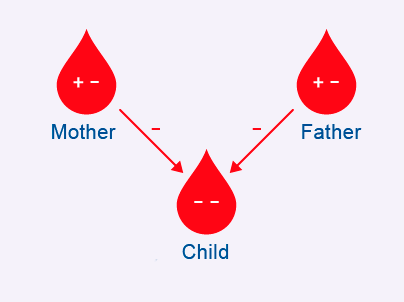



About Blood Types Blood Centre




How To Solve Abo Blood Type Problems Using Pedigree Chart Youtube




Blood Type Chart And Information On Blood Group Types Disabled World
/56385037-56a6fcec5f9b58b7d0e5ddc1.jpg)



Abo Blood Type Incompatibility Between Mother And Baby




How To Determine Your Baby S Blood Type Using A Punnett Square




Can Two Rh Positive Parents Have An Rh Negative Child



Blood Types Parents




Ethnic Distribution Of Blood Types Babymed Com




The Importance Of Knowing Your Baby S Blood Type Future Health Biobank




Blood Type Compatibility Genetics
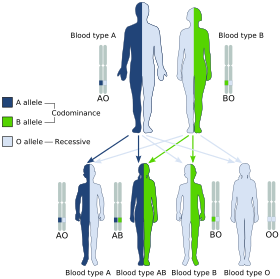



Abo Blood Group System Wikipedia




Blood Types Chart 7 Free Pdf Download Documents Free Premium Templates




Solved The Genetics Of The Abo Blood Group Background Blood Chegg Com




Blood Types 101 What Does Your Blood Type Mean For Your Health



1
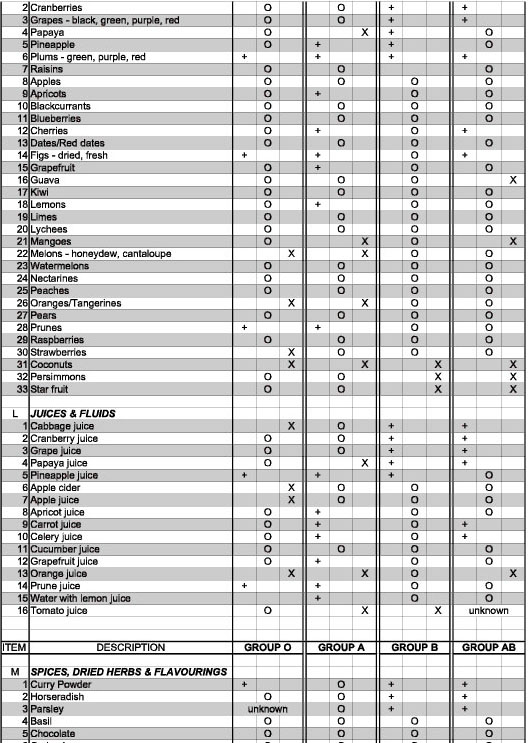



What To Eat According To Your Blood Type Scoop Empire
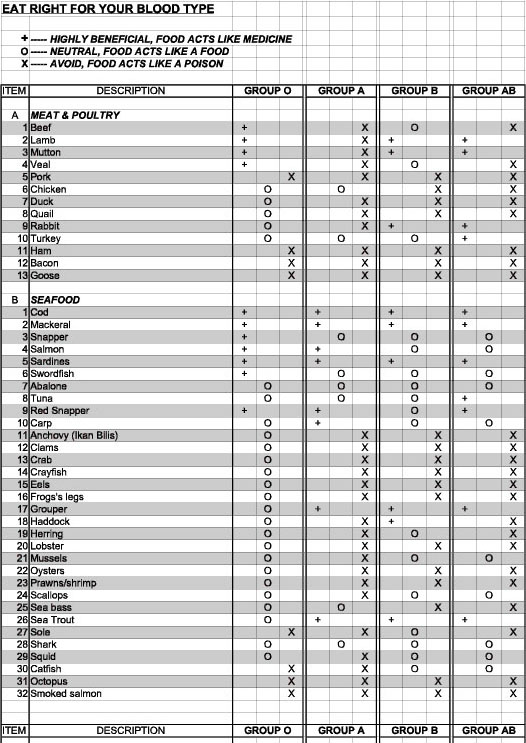



What To Eat According To Your Blood Type Scoop Empire




Understanding Genetics




Rh Factor Blood Types Chart Blood Group Information Health Care Qsota




Solved 1 A How Many Alleles For Blood Type Are In The Abo Chegg Com



0 件のコメント:
コメントを投稿